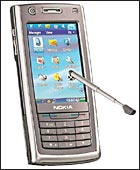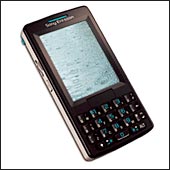|
The
last time I checked, low rise jeans were still in. you know the
kind that you-both women and men-wear several inches below your
belly-button and just a few centimetres higher than... never mind,
I know you know the genre of apparel I'm talking about. Both women
and men can (and do) look good in low rise jeans but only if they
have the bodies to match. A flat tummy is a sine qua non for being
able to carry off low rise jeans or else there'll be an unsightly
bulge spoiling the whole effect. But a well-toned belly may not
be enough; you need streamlined sides as well. Low-rise jeans
or pants are the ultimate revealers and if you're planning to
squeeze yourself into one, make sure you get rid of your love-handles,
otherwise you run the risk of becoming a victim of what is known
as the "muffin-top" syndrome. If you've seen how a baked
muffin swells out of the little paper cup you'll know what that
means in the context of an amply endowed person wearing low-rise
pants.
So, how do you get your body low-rise ready?
Regular readers would've noticed that I've been harping on about
abs in the past couple of instalments of Treadmill, each of which
has described a not-so-common exercise for toning up the tummy.
So close on the heels of weighted leg raises, hanging raises and
rope crunches, here goes one exercise that's designed to define
your obliques, the muscles that run down the sides of your abdomen.
While garden variety crunches and normal
front leg raises (where you lie on your back and raise your legs
using your abs to do the work) help strengthen the muscles in
the front of the abdomen, the sides or obliques require different
treatment. One exercise to start with is the side leg raise. Here's
how to do it. Lie on your side, as in the picture (no.1). Now,
raise your left leg up and hold for a couple of seconds as in
picture (no.2). Then return to the starting position. This is
one repetition. Do 15 of them for a set. Now shift position to
lie on the other side and do the exercise, raising your right
leg. Do three sets for each side to complete your session. As
the exercise gets easier to execute, you may like to use weighted
anklets to make it tougher.
Remember though that side raises aren't a
panacea that can rid you of your love-handles. For great abs,
you not only need to strengthen your muscles (via crunches, raises,
etc.) but you also have to burn fat (via cardio vascular exercises)
and a sensible diet. All these can give you a flat tummy and sleek
sides that won't bulge muffin-like out of those low-rise pants
you've been eyeing lately.
-Muscles
Mani
write to musclesmani@intoday.com
Caveat: The physical exercises described
in Treadmill are not recommendations. Readers should exercise
caution and consult a physician before attempting to follow any
of these.
PREVENTING
AND TREATING ASTHMA
Asthma
statistics are alarming! India has 15-20 million asthma patients.
Pollution, a major cause of the disease, levels are rising everyday;
so, a working knowledge of the ailment will equip you to tackle
both prevention- and treatment-related issues better.
What Is It: Asthma is a respiratory
disorder marked by unpredictable periods of acute breathlessness
and wheezing. It affects the lungs and the airways that deliver
air to the lungs. Asthma attacks can last from less than an hour
to a week or more and can strike frequently or only after very
long intervals.
Causes: Says Dr B. Bhalotra, Pulmonary
Medicine Consultant, Sir Ganga Ram Hospital, New Delhi: "An
asthma attack occurs when the airways become inflamed in response
to triggers such as dust, smoke, pollen, feathers, pet hair, insects,
some foods and drugs and cold weather."
Symptoms: These can vary from person
to person. "There is usually irritation in the throat or
a tightness in the chest, followed by coughing, wheezing or breathlessness,"
says Dr Bhalotra. Severe asthma symptoms are life-threatening.
They may include difficulty in talking or concentrating; hunched
shoulders; shallow, faster or slower breathing; and nasal flaring.
Treatment: Asthma, for the most part,
cannot be cured, but it can be controlled. Treatments, typically,
aim to reduce the frequency, severity and length of asthma attacks.
Treatment plans involve combining medicines and asthma management
techniques. The latter includes identifying and avoiding the things
that trigger asthma; this is an essential part of the treatment
plan. There are two main modes of treatment, relievers and preventers:
Relievers: Asthma relievers are medications
that provide instant relief from asthma symptoms. They relax the
muscles around the airways, open them up and allow you to breath
more easily.
Preventers: They usually contain a
steroid that reduces the inflammation of the airways. These drugs
do not have an immediate effect and it may be several days before
you notice any reduction in your symptoms.
-Manu Kaushik
PRINTED
CIRCUIT
Stylus War
The Nokia 6708 and
the Sony Ericsson M600 are targeted at the same customer group.
Here's a look at how they stack up.
Nokia 6708
MRP: Rs 21,559; available for Rs 19,000
 The
Nokia 6708 is the latest phone from Nokia's enterprise Solutions
division, and I loved it. Let me explain why. I find small keypads
extremely frustrating. God did not make me with small fingers;
well He did, but they've grown with time. I'm the sort of person
who finds undersize laptops irritating and, thus, I've never been
the biggest fan of SMSing. The 6708 turns that on its head by
telling you to 'write'. I've not written so much text since my
exam in college. And I like it. The
Nokia 6708 is the latest phone from Nokia's enterprise Solutions
division, and I loved it. Let me explain why. I find small keypads
extremely frustrating. God did not make me with small fingers;
well He did, but they've grown with time. I'm the sort of person
who finds undersize laptops irritating and, thus, I've never been
the biggest fan of SMSing. The 6708 turns that on its head by
telling you to 'write'. I've not written so much text since my
exam in college. And I like it.
It is true that this handset has a smallish
number pad, but I preferred to use the softpad that flashed up
on the screen every time I wanted to make a call. But the reason
I fell in love with the 6708 had nothing to do with its abilities
as a phone. You see, some engineer in Nokia decided that loading
a programme called Recon on to the phone might be a good idea.
Starting Recon converts the 6708 into a universal remote, and
you have no idea what putting such a device into the hands of
a self-confessed remote fiend can do. For example, I've recently
been spending far too much time inside airport departure lounges
and I'm sick and tired of watching news all the time. So, a couple
of seconds later, I'm watching some booty move around on vh1,
which you gotta admit is a lot more fun than watching news anchors
acting self-important.
And for that very reason alone-well it is
a good phone as well-I love this handset. Now to change the channel.
Sony Ericsson M600
MRP Rs 20,995; available for Rs 19,500
 It
is positioned exactly in the Nokia 6708's niche-targeting buyers
who want e-mail and office tools in their handset but cannot afford
a high-end Communicator or P-series device. The M600 looks fairly
similar to the 6708, except for one thing-it has a qwerty keypad.
Not quite a full keypad, though; each key represents two letters,
occasionally a number and, maybe, a couple of symbols to boot. It
is positioned exactly in the Nokia 6708's niche-targeting buyers
who want e-mail and office tools in their handset but cannot afford
a high-end Communicator or P-series device. The M600 looks fairly
similar to the 6708, except for one thing-it has a qwerty keypad.
Not quite a full keypad, though; each key represents two letters,
occasionally a number and, maybe, a couple of symbols to boot.
Sony Ericsson could not send me the device
because they didn't have any to spare, so I had to go to a mobile
outlet to get an idea of the phone and play around a bit. If people
found the 6708's keypad irritating, they'll freak out at this
keypad; it will take a lot of getting used to, because despite
the largish keys, multiple characters on a single key means you
have to carefully manoeuvre your finger to the left or the right
of a particular key and hope you don't bungle up in the process.
Definitely not the easiest input device I've come across.
Plus, I had become rather accustomed to stylus-entry
by then, and the M600 has a stylus, strangely coloured blue to
enable entry. Much, much easier. Or maybe, I've just become used
to writing out messages. No camera though, but maybe some people
like not to be voyeuristic.
-Kushan Mitra
|






 T
T It
is positioned exactly in the Nokia 6708's niche-targeting buyers
who want e-mail and office tools in their handset but cannot afford
a high-end Communicator or P-series device. The M600 looks fairly
similar to the 6708, except for one thing-it has a qwerty keypad.
Not quite a full keypad, though; each key represents two letters,
occasionally a number and, maybe, a couple of symbols to boot.
It
is positioned exactly in the Nokia 6708's niche-targeting buyers
who want e-mail and office tools in their handset but cannot afford
a high-end Communicator or P-series device. The M600 looks fairly
similar to the 6708, except for one thing-it has a qwerty keypad.
Not quite a full keypad, though; each key represents two letters,
occasionally a number and, maybe, a couple of symbols to boot.